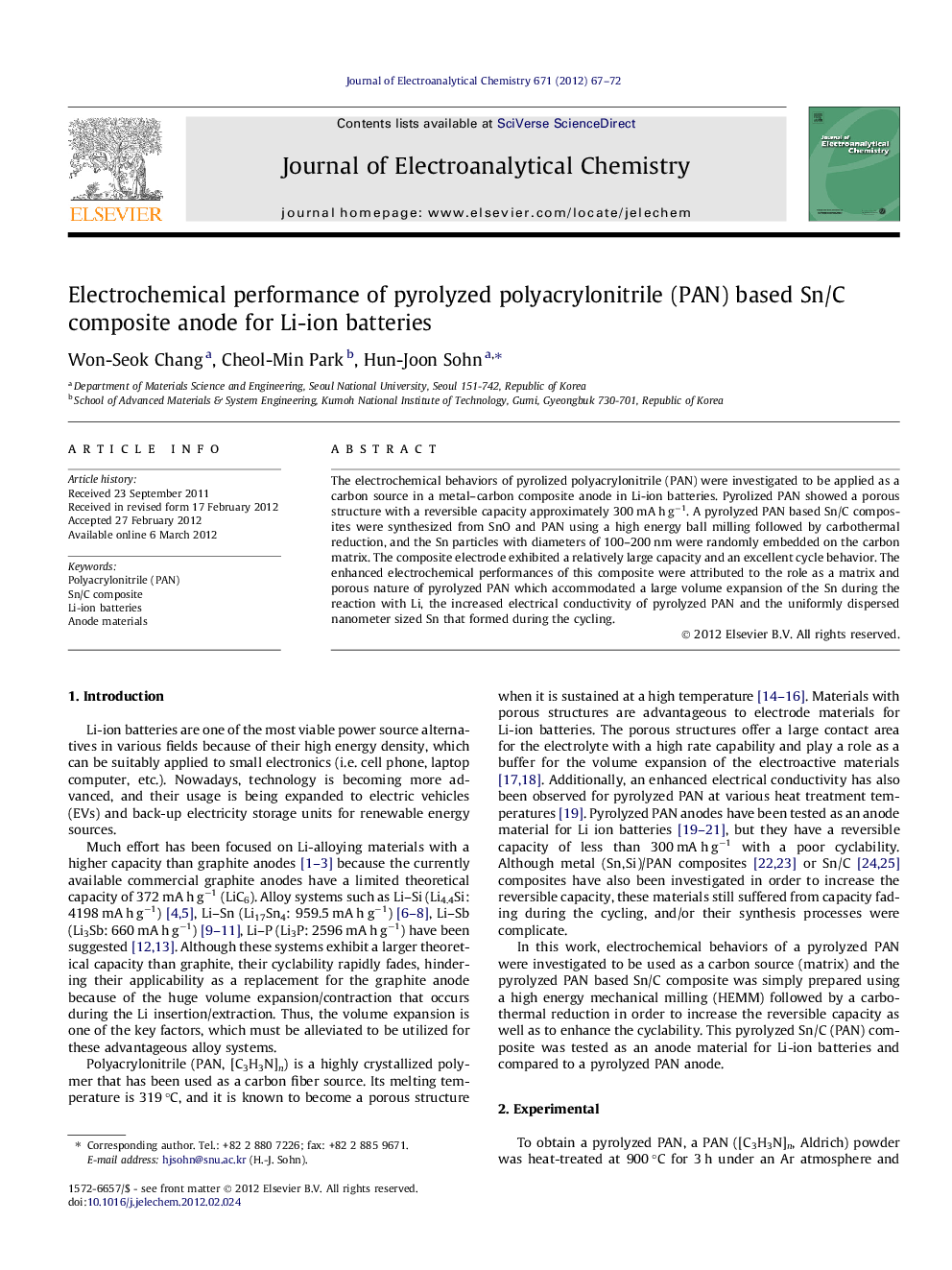| Article ID | Journal | Published Year | Pages | File Type |
|---|---|---|---|---|
| 219388 | Journal of Electroanalytical Chemistry | 2012 | 6 Pages |
The electrochemical behaviors of pyrolized polyacrylonitrile (PAN) were investigated to be applied as a carbon source in a metal–carbon composite anode in Li-ion batteries. Pyrolized PAN showed a porous structure with a reversible capacity approximately 300 mA h g−1. A pyrolyzed PAN based Sn/C composites were synthesized from SnO and PAN using a high energy ball milling followed by carbothermal reduction, and the Sn particles with diameters of 100–200 nm were randomly embedded on the carbon matrix. The composite electrode exhibited a relatively large capacity and an excellent cycle behavior. The enhanced electrochemical performances of this composite were attributed to the role as a matrix and porous nature of pyrolyzed PAN which accommodated a large volume expansion of the Sn during the reaction with Li, the increased electrical conductivity of pyrolyzed PAN and the uniformly dispersed nanometer sized Sn that formed during the cycling.
► Pyrolyzed polyacrylonitrile (PAN) based Sn/C composite as an anode material for Li-ion batteries. ► Preparation of composite via high energy mechanical milling and carbothermal reduction. ► Nano-sized Sn particles were embedded in a pyrolyzed PAN matrix. ► Various sized pores were also confirmed. ► Pyrolyzed Sn/C composite exhibited a superior electrochemical performance.
